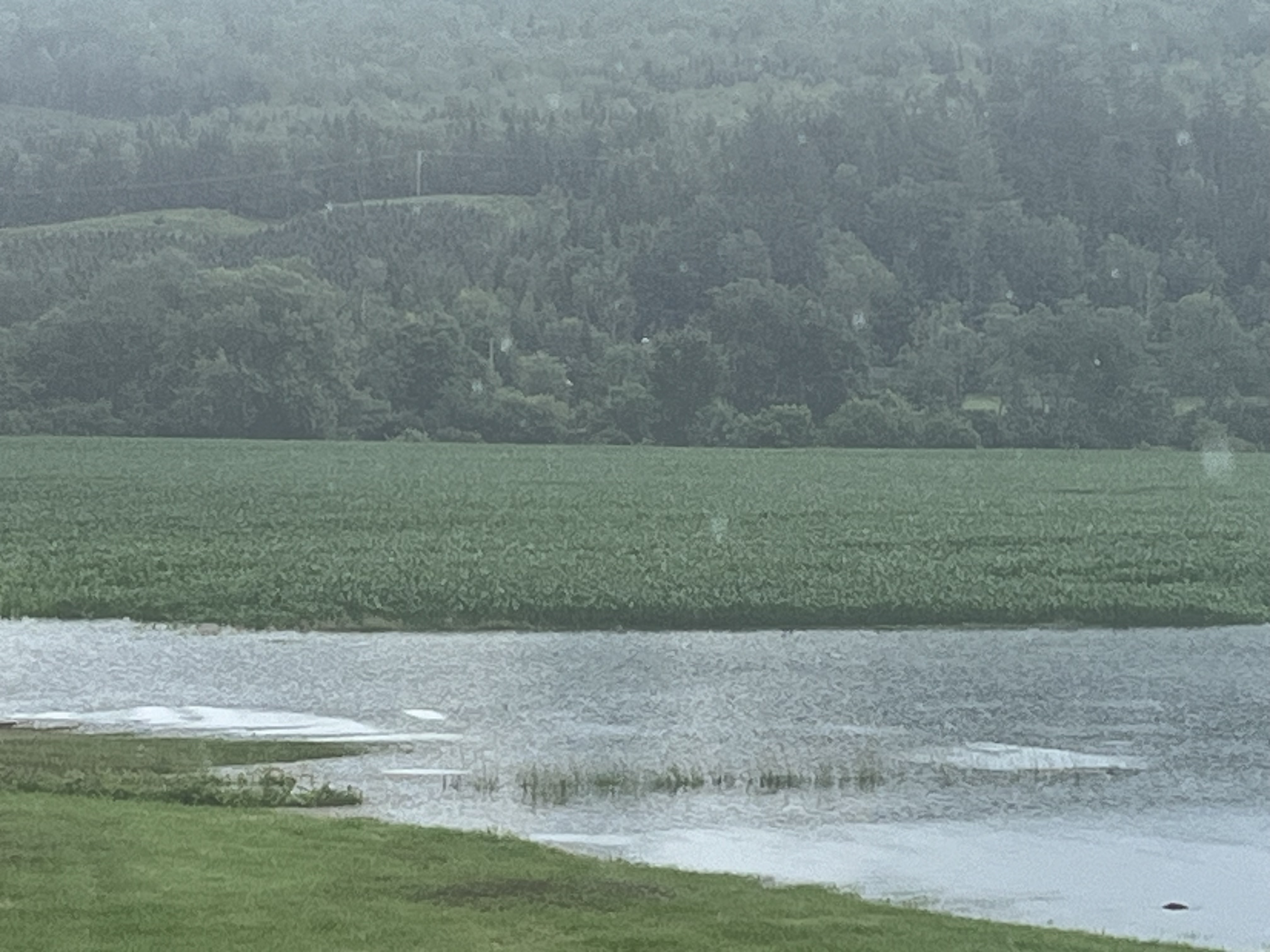
Two summers of extreme weather highlight farm vulnerabilities and potential responses
By Julia Riesman, ECO AmeriCorps Service Member
Vermont farms have been hit by catastrophic flooding two summers in a row and are using a variety of strategies to mitigate damage and recover economic losses . In August 2023 the Vermont Agricultural Recovery Task Force was established to coordinate recovery efforts for Vermont’s agriculture and food systems and examine the many challenges facing farmers when extreme weather and flooding occurs . The task force continues to convene regularly to share examples and discuss recommendations, progress, resiliency strategies, and ongoing gaps .
One farm affected by flooding two years in a row was Jericho Settlers Farm . They cultivate 35 acres along the Winooski River in Richmond and two acres of hoop houses on their main farm in Jericho . Nearly all their fields in Richmond, which were planted with potato, beet, and carrot crops, were inundated in July 2023, followed by a similar extent of losses in July 2024 . Their hoop houses in Jericho are built on higher ground and avoided the flooding both years .
Christa Alexander, co-owner of Jericho Settlers Farm with Mark Fasching, said they were better prepared to react to flood warnings in 2024 . They learned that the United States Geological Survey Jericho Settlers Farm after flooding in 2024; aerial image from Christa Alexander years . In addition, Jericho Settlers asked their CSA community if anyone could buy their winter shares early as a way of immediate support . Some members even supported them by buying their next CSA a year in advance . Strong community networks play a crucial role for Vermont farm businesses after natural disasters . (USGS) predictions for the river’s water level may change . This year, when they got the flood warnings, they made the decision to harvest everything that was ready and move most of the equipment out of the fields “just in case” . As a result, even though they still suffered immense loss, they managed to save much more produce than they would have otherwise . In addition, they have shifted their focus to increasing productivity in the Jericho hoop houses, where they grow year-round . This has offered some financial stability even amidst the devastating flooding on the fertile Richmond land.
Following the floods, Jericho Settlers Farm was able to access relatively quick assistance through the NOFA-VT Farm Emergency Fund and the Vermont Farm Fund loan program . The Business Emergency Gap Assistance Program (BEGAP) was “critical” for their recovery . These combined funding sources helped their farm recover 35% of their losses both years. In addition, Jericho Settlers asked their CSA community if anyone could buy their winter shares early as a way of immediate support . Some members even supported them by buying their next CSA a year in advance . Strong community networks play a crucial role for Vermont farm businesses after natural disasters.
However, Christa identified a lack of crop insurance options as, in her view, a substantial gap for Vermont farmers . “Crop insurance is not designed for diversified vegetable farms,” she stated simply . For smaller, diversified farms, which are the norm for New England, private crop insurance policies are often not available . For crops which are not covered by private crop insurance, the USDA offers a Non-Insured Crop Disaster Assistance Program (NAP) . The frequently cited concerns with the NAP program are that it is quite an administrative burden, and payouts tend to be delayed and small compared to both the cost of premiums and the market price of the crop lost .
At an October workshop organized by NOFA VT, a variety of farms located at the Intervale discussed farming in floodplains . Dylan Zeitlyn of Diggers’ Mirth Collective Farm expressed his stance on the importance of floodplains remaining in agriculture . “It benefits society as a whole for extremely fertile floodplain land to be used to produce food . Because of this, it is fair to ask society as a whole to bear some of the risk via subsidized insurance or a streamlined disaster assistance program .”
Despite risks, Christa is resolute that floodplain farming is an essential land use for community resilience: “Our goal is to feed a lot of people in the community; we’re not going to downsize .” Compared to other land uses, she says, “fields in floodplains can recover from regular f loods, but housing and other developments on the same land are not as easily reconstructed .”
Jericho Settlers Farm is just one of many Vermont farms that have exemplified perseverance and resilience in the face of repeated f looding . The Vermont Agency of Agriculture, Food and Markets is proud to have played a part in helping them recover from f lood events in the past two years through BEGAP and is committed to sharing strategies that farmers statewide are implementing in their continued resiliency .

